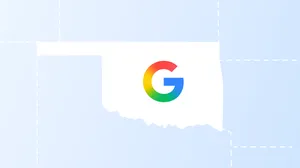A proactive approach to disaster relief
"It was as if someone had thrown an atomic bomb. Everything was destroyed." Fisherman Luciano Morales says this was the damage that Hurricane Maria brought his small Puerto Rican village of Punta Santiago. One of three residents who decided to stay back to protect his household and belongings, Luciano soon realized that a generator and gasoline weren’t enough to weather the storm, or “Mrs. Maria” as he called it. His home and belongings, along with most of the village’s infrastructure, turned to rubble.
Following the hurricane, GiveDirectly, a nonprofit that gives money to the poor, no strings attached, applied it’s model in response to Maria, and gave cash to Luciano and over 4,700 families, empowering them to solve their most pressing needs.
Historically, following major disasters, charitable organizations and aid agencies supply bottles of water, sheets of drywall or any number of other goods and services that those affected may need. While this support can at times be critical, it’s impossible for a pre-set bundle of goods and services to meet the diverse needs of those affected by a disaster. Some people need life preserving pharmaceuticals that require refrigeration. Some have medical conditions that call for a very specific kind of diet. And some have jobs for which they’re paid only when they show up. It’s impossible to forecast every person or family's most pressing needs.
Research on direct cash transfers has shown wide-ranging positive outcomes and immediate improvement on recipients’ lives. Affected individuals largely prefer it over traditional forms of aid—yet cash giving makes up a very small share of disaster response spending.
Ahead of this year’s storm season, Google.org is contributing $3 million to GiveDirectly to support large-scale cash transfers when a natural disaster hits the U.S. The grant will allow GiveDirectly to support more than 2,400 low-income families and help them better understand how people like Luciano want to be helped during different points of the recovery process. A team of four Google.org Fellows is working full-time to combine government data on socioeconomic indicators and storm damage data into a single tool that will help GiveDirectly better identify and support the people most in need.
In a study published by GiveDirectly, the organization found cash transfers had a significant impact on the poorest populations following the 2017 hurricanes in Texas and Puerto Rico. Cash allowed families to expand their children’s nutritional intake, improve the quality of their homes, avoid debt, reduce stress and improve living conditions.
There are still important questions remaining about direct cash giving after natural disasters. Our collaboration with GiveDirectly on this work will be guided by some of these outstanding questions: How does the impact change if you give the cash several weeks after a disaster, as opposed to several months later, as was the case in the pilot study? Does giving money at different intervals have different impacts? Do large cash transfer programs impact the economy beyond individual recipients?
Crisis response has always been a key focus area of Google.org. We’ve supported communities and nonprofits on the front lines through immediate and long-term recovery via our products, technical volunteers and over $60 million in funding since 2005. With GiveDirectly, we look forward to evolving the way we respond to ensure that we’re providing support to those who need it most in times of crisis in the most effective, data-driven and efficient way possible.








